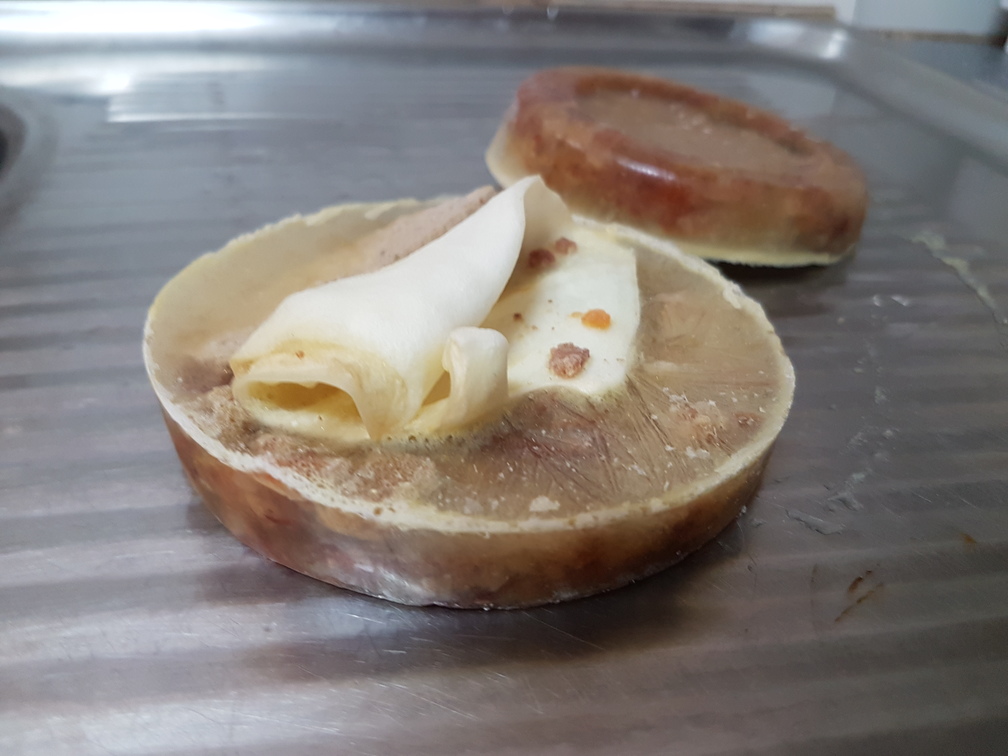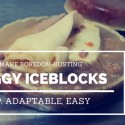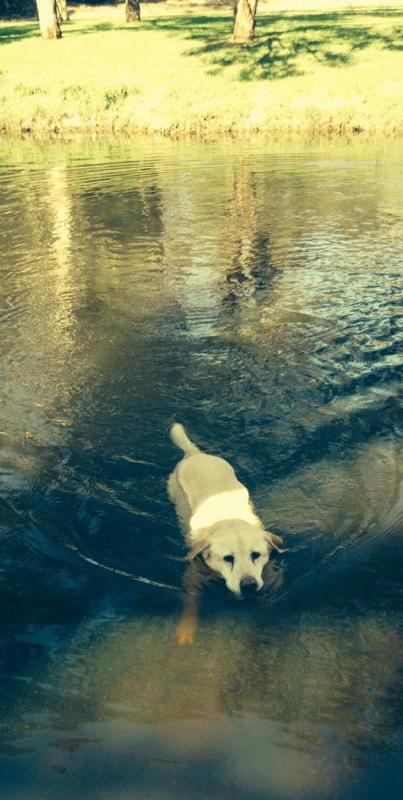Doggy Iceblocks

One of my biggest tips for problematic dogs is to give them boredom busters. These are normally food based challenges that keep the dog occupied for a long period of time. This could be a good meaty bone, a kong toy, or a doggy ice block.
As many of my clients through Dog Consultancy have never heard of an ice block before, I thought I’d blog post instructions on making them. Not that they’re hard to do! Variations of this ‘recipe’ all work fine, but here is a starting point.
1. Select a container
Choose an appropriate sized container for your dogs. I have small dogs, so I generally use plastic tubs for dips that are about 150g or so. Larger dogs could get margarine containers, up to ice-cream sized containers. Make sure you choose a container that is flexible, as you want to be able to pop out the frozen treat in the end. If the plastic is to rigid you might have trouble doing this.
2. Smear something tasty inside
Once you have your container, smear something tasty around the edges of it. Suggestions could be:
- vegemite
- peanut butter
- mince
- canned cat or dog food
As long as it is safe for dogs to eat, and your dog likes to eat it, the options here are endless.

A small plastic container with canned puppy food pressed along the bottom to create a tasty layer.

This is ‘kibble stock’. Dried dog food was placed in water, then microwaved for 30 seconds or so. The kibble has broken down into slush and made a stock.
3. Make up a stock
We are now going to fill the tub with flavoured water. Suggestions include:
- commercial stocks
- vegemite stock (vegemite melted into boiling water)
- microwaved kibble (put a small amount of kibble into water, microwave until kibble becomes pulpy and water becomes stock-like)
Gently pour stock into your tub, making sure you don’t disturb your tasty layer. Leave enough room in the container to…
4. Add further treats
Add to your ice block anything that your dog might like. If you dog is new to ice blocks, leaving something tempting hanging out of the ice block as a ‘starter’ works well. Suggestions for further treats include:
- pigs ear
- chicken neck
- dog biscuit
- carrot
- dry kibble
- a toy like a ball

These two doggy iceblocks are ready to be frozen. They are made of kibble-stock with dog biscuits, smackos, and dried liver suspended in the liquid.
5. Freeze
Place carefully in your freezer, to avoid gross spillage, and then freeze at least overnight. Once they’re frozen, you can push them out and store them in a more space-conserving way, each necessary.
6. Dispense!
Now, whenever you go out, or your dog needs to be occupied by themselves, take out one of your pre-frozen doggy iceblocks and let them have it! Keep in mind these do make quite a mess, so they’re probably best as an outside meal, or fed in a crate where there’s minimal risk of spillage.

Two frozen ready-to-eat doggy iceblocks. The one in the foreground has a lambs ear sticking out. The one in the background is inverted, so you can see the frozen ‘tasty layer’ of canned food.
But my dog’s allergic to…
If your dog has any food intolerances, just use whatever from this list your dog can eat and leave out everything else. I have made doggy ice blocks for dogs before on special diets, and I have made it just out of microwaved kibble and stock made from that microwaved kibble.
But my dog needs to lose weight…
You control what you put in your dog’s ice block! Cut out parts of your dog’s dinner and place it in the ice block instead. Some food-orientated dogs are happy to have a stock-iceblock, with not much to it except slightly salty water. This is the low-calorie option.
They’re not the most attractive thing to photograph, but dogs love them! Please comment if you have any extra ideas of things to put in your dog’s iceblocks.





